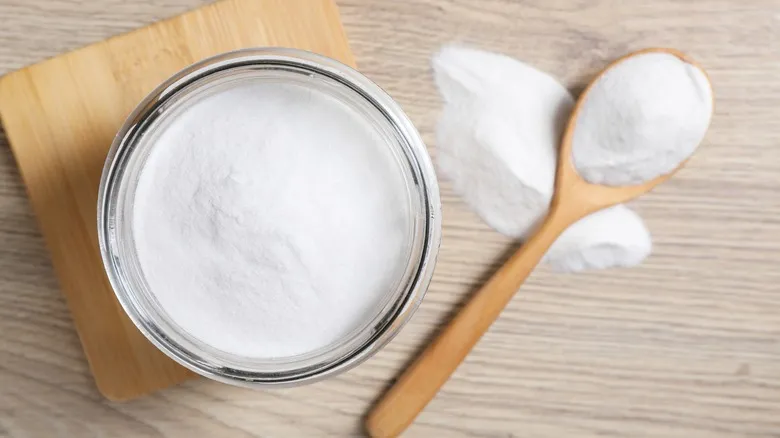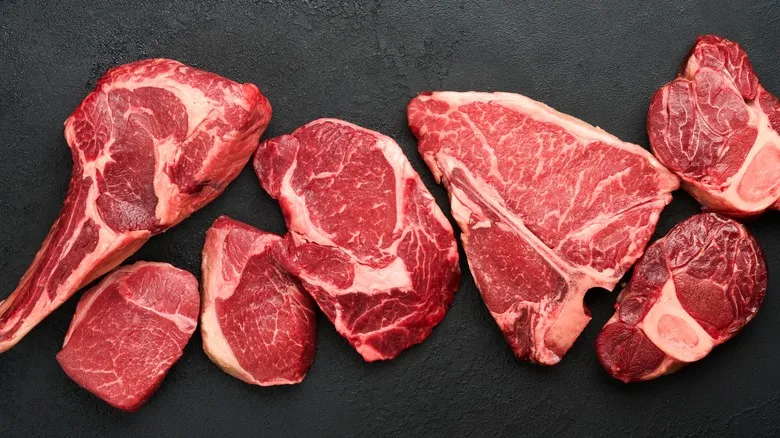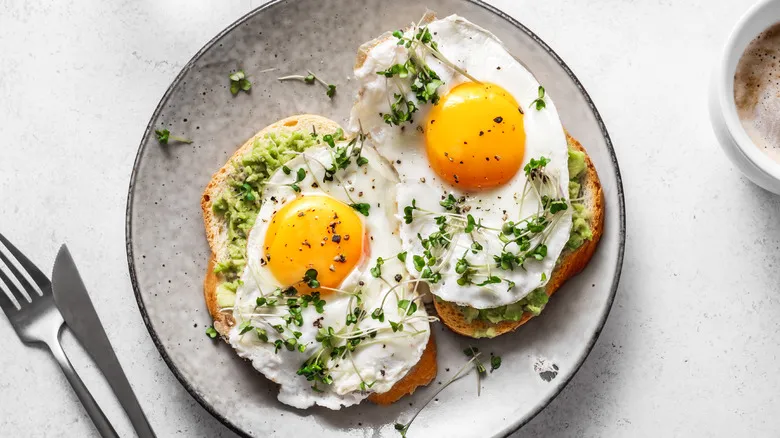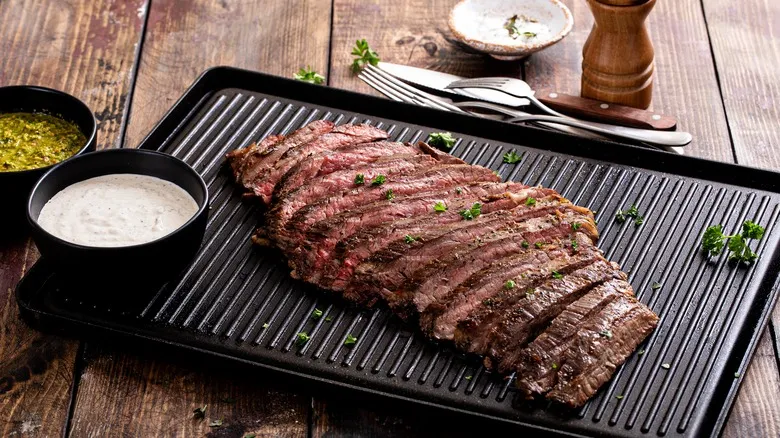Baking soda to the rescue

Baking soda, a fine white powder also referred to as sodium bicarbonate, is favored by bakers for its role as a leavening agent in various baked goods. But how does it help tenderize steak and other meats? The answer lies in the way this natural compound modifies the protein structures in meat.
When baking soda is applied to steak, it increases the alkalinity (i.e., raises the pH) of the meat's surface. This process denatures the tough protein fibers, loosening their tight structure. With the fibers more loosely connected, the steak becomes softer and less chewy. Furthermore, the elevated pH enhances the protein molecules' ability to retain water, resulting in a juicier steak, while also promoting browning and charring on the exterior.
However, there is one important consideration when using baking soda as a tenderizer: its effect on flavor. Sodium bicarbonate can impart a metallic taste, which may influence the overall flavor of your steak. While this change might not be noticeable to everyone, it can subtly alter the taste. To minimize or avoid this flavor change, use the smallest amount of baking soda necessary and rinse the steak under running water after soaking to eliminate any residual chemical.
Why the tenderness of your raw steak matters

When using baking soda to tenderize steak, it's important to recognize why some cuts are tougher than others — it all relates to their position on the animal. Cuts from the more active areas of the cow tend to be tougher because the tissues in these regions are more developed and contain a higher amount of collagen. Collagen is a protein that connects muscles to nearby bones and is generally tougher to chew than standard muscle fibers. Consequently, any steak cut with a higher collagen content will naturally be tougher, making it ideal for this tenderizing method.
For instance, cuts from the cow's shoulders, rump, and legs, such as top round or eye of round, are quite tough due to their frequent use in movement. Similarly, steaks from the belly, like flank steak (which is excellent for grilling), are also moderately chewy because these muscles are engaged while the cow grazes. In contrast, the least active areas of the cow, such as the back and ribs, yield the most tender cuts, including filet mignon from the tenderloin and ribeye steak, both of which are popular choices for grilling.
Ultimately, any steak cut can benefit from this tenderizing technique. It’s all about precision and ensuring that no baking soda residue remains before seasoning and cooking your beef.
Recommended

Butter Vs Oil: Which Is Better For Fried Eggs?

Emeril Lagasse's Topping Tip For The Most Delicious Grilled Peaches

The Spicy Tuna Roll-Inspired Upgrade Your Tuna Salad Needs

Gordon Ramsay Elevates Tuna Salad With 4 Bougie Ingredients
Next up

